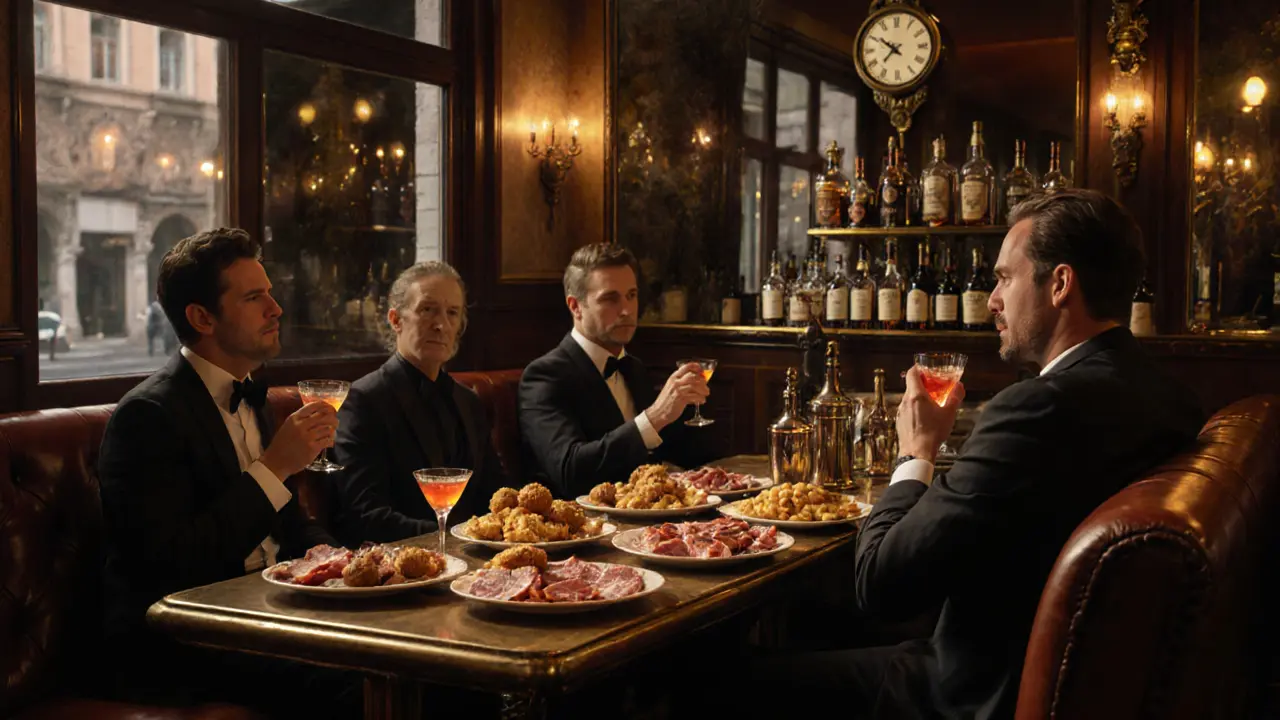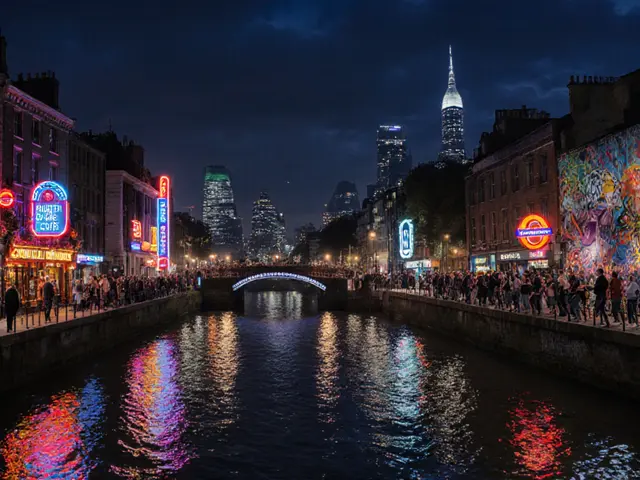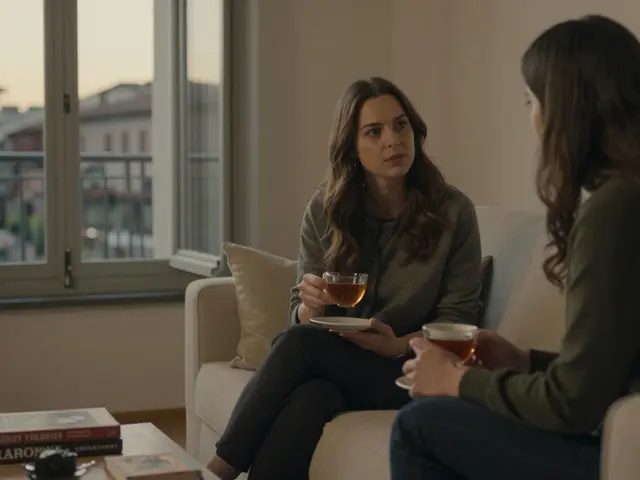When the sun sets over Milan’s Galleria Vittorio Emanuele II, the city doesn’t sleep-it switches modes. By 9 p.m., the quiet elegance of daytime Milan transforms into a buzzing mix of cocktails, basslines, and laughter spilling out of hidden courtyards and rooftop terraces. This isn’t just a city that has nightlife. It’s a city that lives for it.
The Aperitivo Ritual: Milan’s Secret Weapon
You haven’t really experienced Milan until you’ve done an aperitivo. It’s not just a drink. It’s a ritual that starts around 7 p.m. and lasts until 9. For €10-15, you get a cocktail-usually a Spritz, Negroni, or Americano-and a buffet that rivals a small dinner. Think cured meats, stuffed olives, mini arancini, and warm focaccia. It’s not a snack. It’s a full experience.
Head to Bar Basso in the Brera district. This is where the Negroni was invented in 1919. The bartenders still make them the old way-with equal parts gin, vermouth, and Campari, stirred slowly, never shaken. Don’t expect a loud crowd. Expect quiet sophistication, leather booths, and locals who’ve been coming here for decades.
For something more modern, try Bar Basso’s younger sibling, Bar Basso Navigli, near the canals. It’s got outdoor seating, a slightly younger crowd, and a rotating selection of craft aperitifs. The food here is better too-think truffle arancini and smoked salmon crostini.
Where the Locals Go: Beyond the Tourist Zones
Most tourists stick to Corso Como or the Duomo area. But the real nightlife lives in the neighborhoods where Milanese people live. Start with Navigli, the old canal district. It’s got a relaxed, almost village-like vibe. On Friday and Saturday nights, the canals are lined with bars playing indie rock, jazz, or electronic beats. La Cucina di Navigli is a favorite for its wine list and outdoor tables. Order a glass of Franciacorta, Milan’s answer to Champagne, and watch the boats drift by.
Then head to Brera. It’s quieter than Navigli but packed with character. La Cerva is a tiny, dimly lit bar with no sign. You’ll know you’re in the right place when you hear vinyl crackling and someone’s laughing too loud. The cocktail menu changes weekly. Ask for the bartender’s recommendation-they’ll give you something you’ve never tasted before.
For a true local secret, try Bar del Fico in the Porta Venezia area. It’s not on most guides. It’s a converted fruit shop with mismatched chairs, a tiny kitchen, and a wall of bottles. They serve natural wines and homemade snacks like fried zucchini flowers. No music. Just conversation. It’s the kind of place you stumble into and don’t want to leave.
Clubs That Actually Matter
Milan’s club scene isn’t about glitter and VIP sections. It’s about music, atmosphere, and history. If you’re looking for world-class DJs and underground vibes, these are the spots.
Alcatraz has been around since the 1980s. It’s not fancy. It’s concrete floors, industrial lights, and a sound system that shakes your chest. They host everything from techno to experimental noise. The crowd? Artists, designers, students, and a few old-school Milanese who’ve been coming since they were 18. Entry is €10-15 after 11 p.m. No dress code. Just bring your energy.
Magazzini Generali is a converted warehouse near Porta Genova. It’s bigger, more polished, and attracts international DJs. But it still feels raw. The bass hits differently here. The crowd is mixed-locals, expats, fashion influencers, and travelers who know where to look. They open at 11 p.m. and don’t shut down until 5 a.m. On weekends, there’s often a line, but it moves fast. Go early if you want to avoid the wait.
Ex Dogana is a former customs house turned cultural hub. It’s not a club. It’s a space. You’ll find live bands on Tuesdays, vinyl-only DJ sets on Thursdays, and art installations on weekends. The drinks are cheap. The vibe is relaxed. It’s where Milan’s creative class goes to unwind, not to show off.
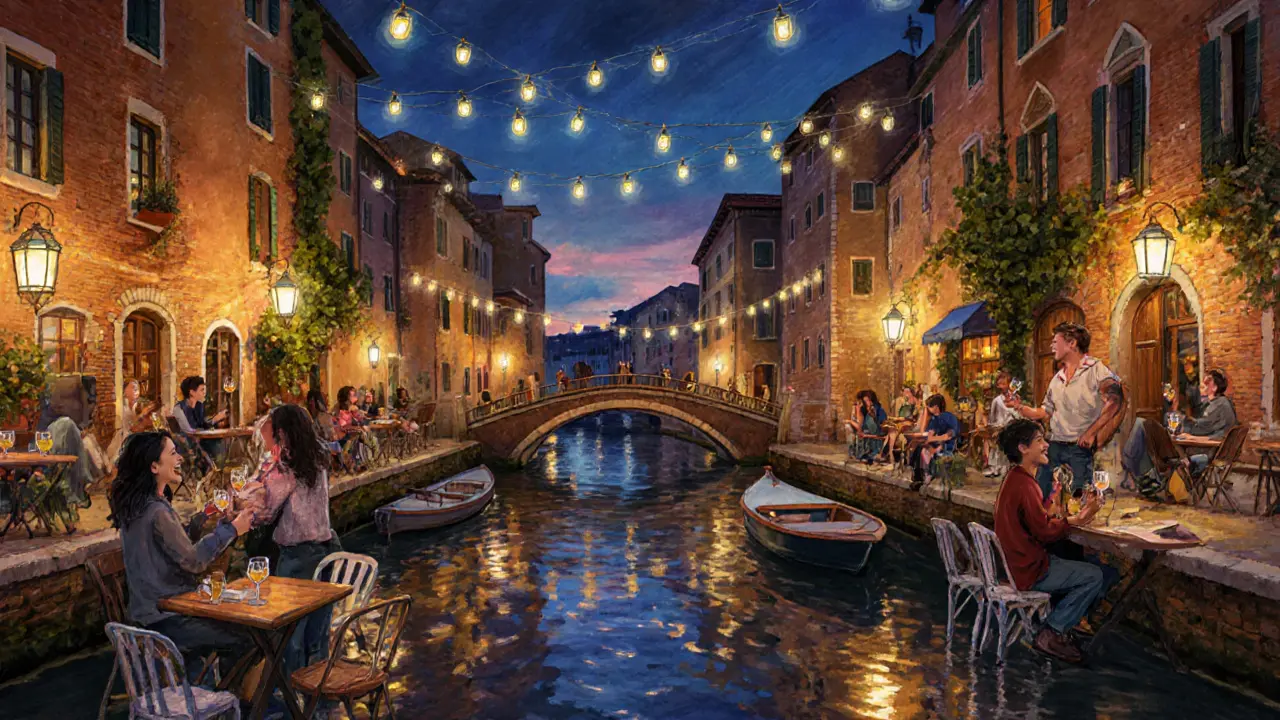
Roof Tops and Hidden Terraces
If you want to see Milan lit up at night, you need to be above it. The city’s skyline-dominated by the Duomo, the Unicredit Tower, and the old industrial chimneys-is stunning from above.
Terrazza Aperol at the Palazzo delle Scienze is one of the most photographed spots. It’s not the cheapest, but the view is worth it. The cocktails are good, the music is chill, and the crowd is a mix of tourists and locals who know how to enjoy a quiet night. Go before 10 p.m. to get a good table.
For something more intimate, try Bar Luce on the rooftop of the Fondazione Prada. It’s a replica of a 1950s Milanese bar, designed by Wes Anderson. It’s quiet, colorful, and feels like stepping into a movie. They serve classic cocktails and light snacks. It’s open until midnight, and you don’t need a ticket to the museum to get in.
What to Avoid
Not all nightlife in Milan is worth your time. Stay away from the bars around Piazza del Duomo that charge €20 for a basic gin and tonic. They’re packed with tourists, loud, and overpriced. Same goes for the clubs that advertise "VIP tables" with bottle service-those are for people who want to be seen, not for people who want to dance.
Also, avoid the tourist traps in the Brera alleyways that call themselves "cocktail bars" but serve pre-made drinks from a bottle. The real ones make everything fresh. If the bartender doesn’t ask you what you like, walk out.
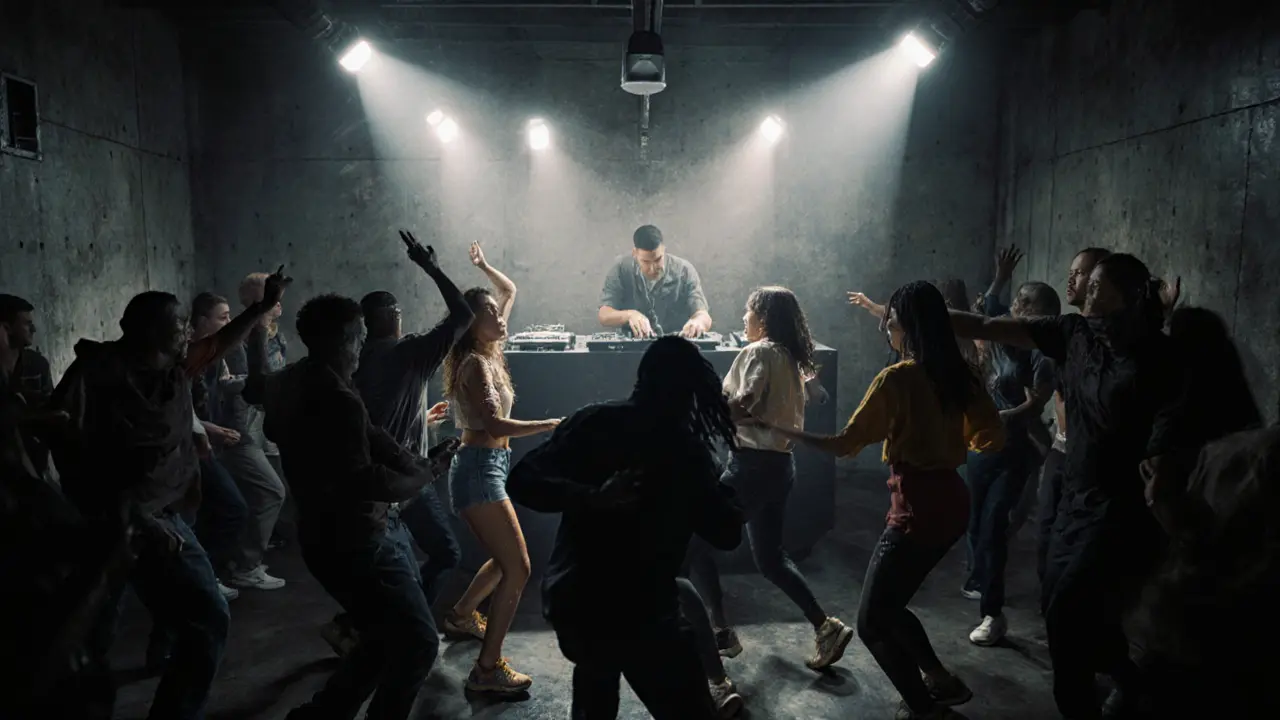
When to Go and How to Get Around
The best nights for nightlife are Friday and Saturday. Bars fill up around 9 p.m., clubs hit their peak at 1 a.m., and the last trains leave around 1:30 a.m. If you’re staying out late, take a taxi or use the night bus. The metro stops running early, and walking back alone after midnight isn’t safe in some areas.
Wear something stylish but comfortable. Milanese people dress well, even when they’re out for drinks. You don’t need a suit, but flip-flops and sweatpants will make you stand out-for the wrong reasons.
Final Tip: Slow Down
Milan’s nightlife isn’t about hitting five clubs in one night. It’s about savoring each moment. Start with an aperitivo. Move to a quiet bar. Then, if you feel like it, dance until dawn. The city moves at its own pace. Match it, and you’ll leave with more than memories-you’ll leave with a story.
What is the best time to start nightlife in Milan?
Most Milanese start their night around 9 p.m. with an aperitivo. Bars get busy between 9 and 11 p.m. Clubs don’t fill up until after midnight, and the real energy kicks in around 1 a.m. Don’t rush-Milan’s rhythm is slow and deliberate.
Is Milan nightlife expensive?
It depends. Aperitivo costs €10-15 and includes food. Cocktails in local bars are €8-12. Club entry is €10-20. Rooftop bars charge more-€15-25 for a drink. But you can have an amazing night without spending more than €40-50 if you stick to local spots and avoid tourist traps.
Do I need to make reservations for Milan clubs?
For most clubs, no. Alcatraz, Ex Dogana, and smaller bars don’t take reservations. Magazzini Generali sometimes has a line on weekends, but it moves quickly. Only book ahead if you’re going to a rooftop bar like Terrazza Aperol or want a table at a popular restaurant-bar combo.
What’s the dress code for Milan nightlife?
Milan is stylish, but not strict. No jeans and sneakers for clubs like Magazzini Generali-opt for dark trousers and a nice shirt or dress. For aperitivo and local bars, casual chic works fine. Flip-flops, tank tops, and sportswear are frowned upon. Think "effortlessly put together," not "costume.
Are there LGBTQ+-friendly spots in Milan?
Yes. Milan has one of Italy’s most open nightlife scenes. Bar Puglia in the Navigli area is a long-standing favorite for LGBTQ+ crowds. La Casa di Anna in Porta Venezia hosts drag nights and queer parties. The city is welcoming, and you’ll find safe, inclusive spaces everywhere.
Can I find live music in Milan at night?
Absolutely. Ex Dogana and Teatro degli Arcimboldi host live bands most nights. Smaller venues like La Sala in the Isola district feature indie rock and jazz. Check local listings on Il Giorno or Time Out Milan for weekly schedules.
